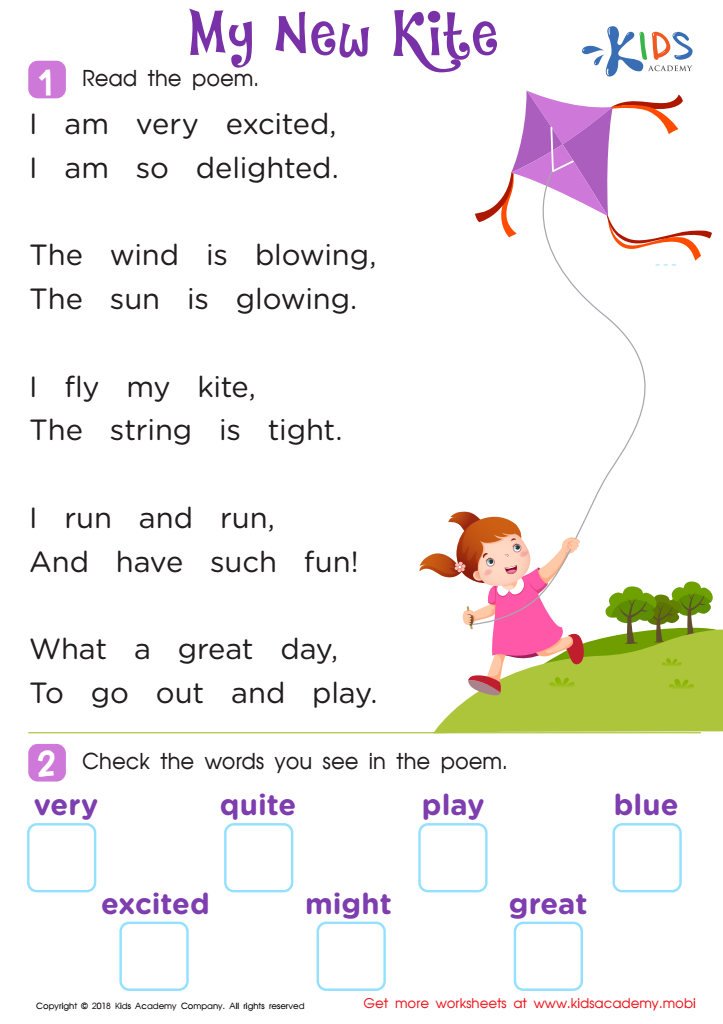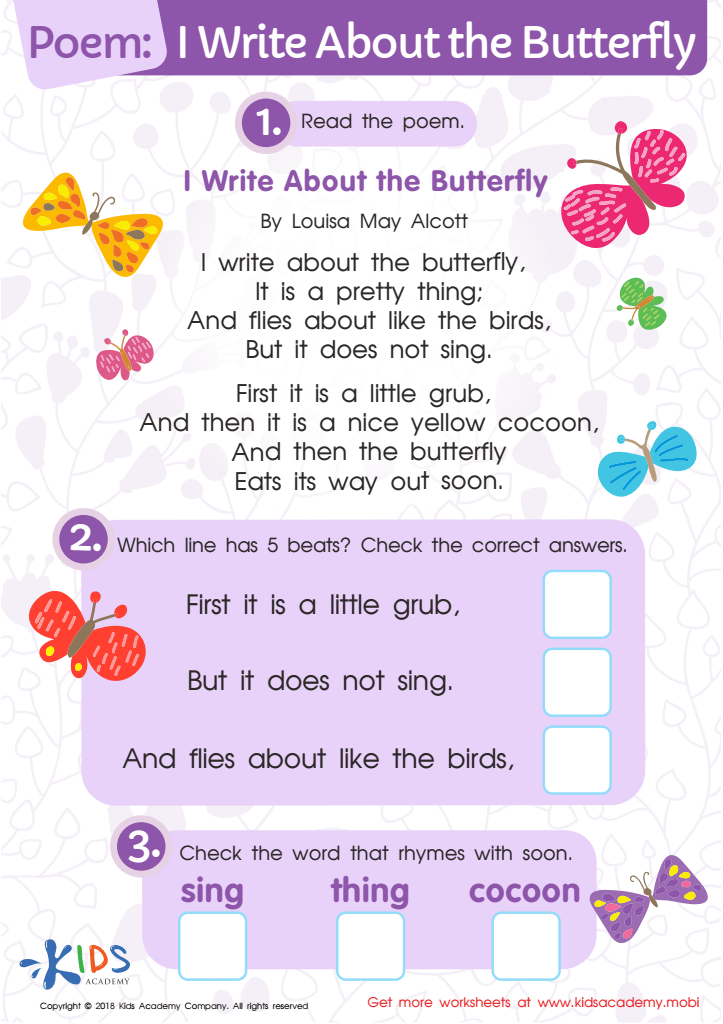Normal Songs and Poems Worksheets Activities With Answers for Ages 5-9
11 filtered results
-
From - To
Unlock the magic of learning with our "Normal Songs and Poems Worksheets" designed specifically for ages 5-9! These engaging activities not only help children explore the rhythms and themes of music and poetry but also enhance their listening, reading, and comprehension skills. Each worksheet includes a medley of fun songs and poems, paired with thought-provoking questions and answers to guide exploration. Ideal for teachers and parents alike, our resources foster creativity and critical thinking while making learning enjoyable. Dive into a world of melodies and words, and watch young minds flourish as they sing, rhyme, and discover together!


Rhymes in Poems Worksheet


Poem: My New Kite Worksheet


Baa Baa Black Sheep: Vocabulary Worksheet


Poem: The Swing Worksheet


Identifying Poems Worksheet


Poem or Story Book? Worksheet


Rhyme In Poetry Worksheet


Rhyming Words in Poems Worksheet


Poem: I Write About The Butterfly Worksheet


Poem: Cats and Dogs Worksheet


Finish Rhyming Poem Worksheet
Parents and teachers should prioritize Normal Songs and Poems Activities for children aged 5-9 because they play a crucial role in early childhood development. These activities foster language acquisition and literacy skills by exposing young learners to rhythm, rhyme, and vocabulary in an engaging format. Songs and poems can enhance phonemic awareness, which is essential for reading readiness, as children learn to identify sounds and patterns in language.
Moreover, these activities offer a creative outlet for self-expression and imagination. Engaging with music and poetry encourages children to explore their emotions and thoughts, building confidence in their communication abilities. Such interactions also enhance memory, as catchy tunes and memorable verses make learning enjoyable and easier to retain.
Furthermore, these activities promote social skills, as children often participate in them together, sharing experiences and developing cooperation and listening skills. The collaborative nature of singing and reciting poetry instills a sense of community and belonging.
Ultimately, incorporating Normal Songs and Poems Activities enrich professional educator programs and parenting strategies, supporting holistic child development and paving the way for a lifelong love of learning and appreciation for the arts.
 Assign to My Students
Assign to My Students






















